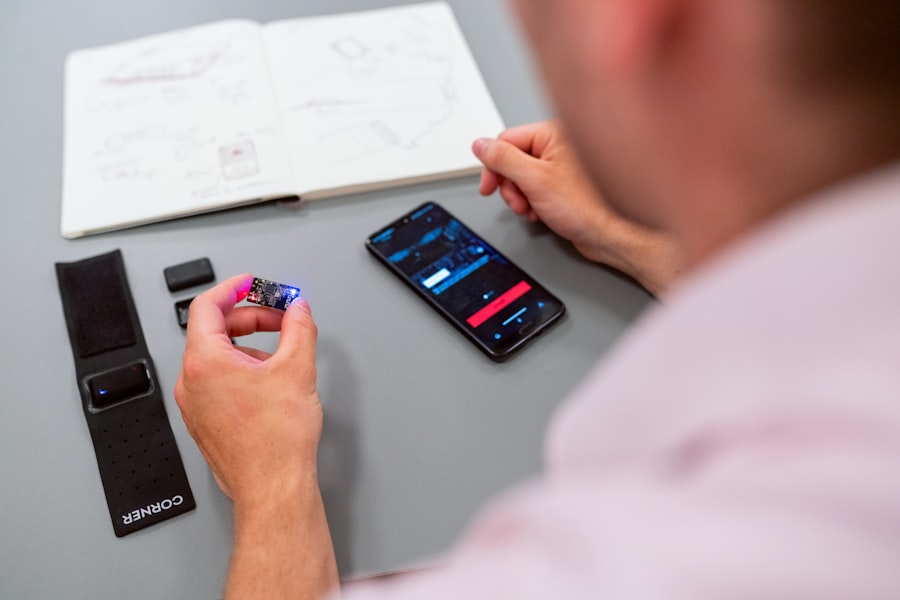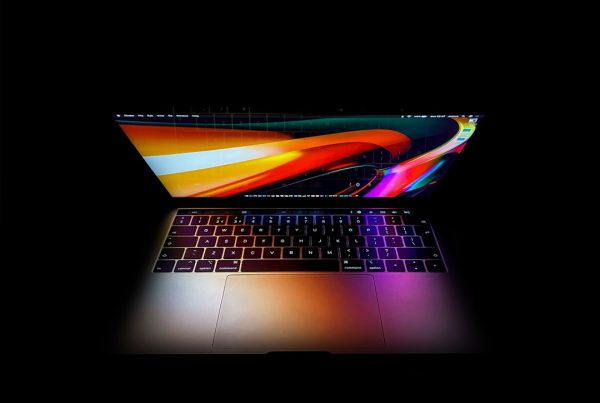In the digital age, where information is exchanged at lightning speed, the need for security has never been more critical. One of the tools that have emerged in the realm of cybersecurity is the USB keylogger. You may have heard of keyloggers in general, but USB keyloggers are a specific type that can be particularly insidious.
These devices are designed to capture keystrokes made on a computer, allowing an attacker to gather sensitive information such as passwords, credit card numbers, and personal messages without your knowledge. Understanding what USB keyloggers are and how they operate is the first step in safeguarding your data. USB keyloggers are typically small devices that can be easily plugged into a computer’s USB port.
They can be disguised as innocuous items, such as USB flash drives or adapters, making them difficult to detect. Once connected, they begin recording every keystroke made on the keyboard, storing this information for later retrieval by the attacker. This covert operation can occur without any noticeable impact on the computer’s performance, which is why many users remain unaware of their presence.
As you delve deeper into the world of USB keyloggers, it becomes clear that their potential for misuse poses a significant threat to your personal and professional security.
Key Takeaways
- USB keyloggers are small devices that can be plugged into a computer to record keystrokes.
- USB keyloggers work by intercepting and recording keystrokes, allowing attackers to capture sensitive information such as passwords and credit card numbers.
- Risks and threats posed by USB keyloggers include identity theft, financial fraud, and unauthorized access to sensitive information.
- Signs of a USB keylogger attack may include unexplained data breaches, suspicious network activity, and unauthorized access to accounts.
- Protecting your data from USB keyloggers involves using encryption, regularly updating security software, and being cautious about plugging in unknown USB devices.
How USB Keyloggers Work
The operation of USB keyloggers is deceptively simple yet highly effective. When you connect one to your computer, it acts as an intermediary between the keyboard and the computer itself. As you type, the keylogger captures each keystroke and stores it in its internal memory.
Depending on the sophistication of the device, it may also have features that allow it to transmit this data wirelessly to an attacker or store it for later retrieval via a USB connection. This means that even if you think you are typing in a secure environment, your information could be compromised without your knowledge. Moreover, some USB keyloggers come equipped with advanced capabilities, such as the ability to log timestamps or capture screenshots.
This added functionality can provide attackers with a more comprehensive view of your activities, making it easier for them to exploit your information. As you consider how these devices operate, it’s essential to recognize that their stealthy nature makes them particularly dangerous. They can be deployed in various settings, from public places like libraries and cafes to private offices, making it crucial for you to remain vigilant about your surroundings and the devices connected to your computer.
Risks and Threats Posed by USB Keyloggers

The risks associated with USB keyloggers are extensive and multifaceted. One of the most immediate threats is the potential for identity theft. When an attacker gains access to your keystrokes, they can easily obtain sensitive information such as usernames and passwords for online banking or social media accounts.
This information can then be used to impersonate you, leading to financial loss and damage to your reputation. The consequences of identity theft can be long-lasting and challenging to rectify, making it imperative for you to take proactive measures against such threats. In addition to identity theft, USB keyloggers can also facilitate corporate espionage.
If you work in a competitive industry or handle sensitive information, the presence of a keylogger could put your organization at risk. An attacker could gain access to trade secrets, client data, or proprietary information, which could be detrimental to your company’s success. The financial implications of such breaches can be staggering, not to mention the potential legal ramifications if client data is compromised.
As you navigate your professional landscape, it’s essential to recognize that USB keyloggers pose a significant threat not only to individuals but also to businesses as a whole.
Signs of a USB Keylogger Attack
| Signs of a USB Keylogger Attack |
|---|
| 1. Unusual USB devices connected to the computer |
| 2. Strange behavior of the computer, such as slow performance or unexpected errors |
| 3. Suspicious network activity or data transfers |
| 4. Unauthorized access to sensitive information or accounts |
| 5. Presence of unfamiliar files or software on the computer |
Detecting a USB keylogger attack can be challenging due to the covert nature of these devices. However, there are certain signs that may indicate that your system has been compromised. One of the most common indicators is unusual behavior on your computer.
If you notice unexpected pop-ups, slow performance, or unfamiliar programs running in the background, it may be worth investigating further. These symptoms could suggest that malicious software is present on your system, potentially working in conjunction with a keylogger. Another sign to watch for is unauthorized access to your accounts.
If you receive notifications about login attempts from unfamiliar locations or devices, it could indicate that someone has obtained your credentials through a keylogger. Additionally, if you find that your passwords have been changed without your knowledge or that transactions have occurred that you did not authorize, these are red flags that should not be ignored. Being aware of these signs can help you take swift action to protect your data and mitigate any potential damage.
Protecting Your Data from USB Keyloggers
To safeguard your data from USB keyloggers, it’s essential to adopt a proactive approach to security. One of the most effective strategies is to maintain physical control over your devices and ensure that only trusted individuals have access to them. This means being cautious about where you use your computer and who is around when you’re entering sensitive information.
Public spaces can be breeding grounds for malicious activity, so consider using privacy screens or working in more secure environments when handling sensitive data. Additionally, implementing strong cybersecurity practices can significantly reduce your risk of falling victim to a USB keylogger attack. Regularly updating your operating system and software ensures that you have the latest security patches installed, making it more difficult for attackers to exploit vulnerabilities.
Utilizing antivirus software can also help detect and remove malicious programs before they can do any harm. By taking these steps, you create multiple layers of defense against potential threats.
Best Practices for USB Keylogger Prevention

Disabling Unused USB Ports
Preventing USB keylogger attacks requires a combination of awareness and best practices. One effective measure is to disable unused USB ports on your computer or laptop. This simple step can make it more difficult for an attacker to plug in a keylogger without your knowledge.
Controlling USB Port Access
If you frequently use external devices like flash drives or printers, consider using a USB hub with individual power switches for each port; this way, you can control which ports are active at any given time. This added layer of control can help minimize the risk of a keylogger being connected to your device.
Raising Awareness and Educating Others
Another best practice is to educate yourself and those around you about the dangers of USB keyloggers and other forms of cyber threats. Awareness is one of the most powerful tools in cybersecurity; by understanding how these devices work and the risks they pose, you can better protect yourself and others from falling victim to attacks.
Promoting a Culture of Vigilance
Encourage open discussions about cybersecurity within your workplace or social circles so that everyone remains vigilant and informed. By fostering a culture of awareness and cooperation, you can help prevent USB keylogger attacks and other forms of cyber threats.
How to Detect and Remove USB Keyloggers
Detecting USB keyloggers requires a keen eye and some technical know-how. Start by inspecting all physical connections on your computer; look for any unfamiliar devices plugged into the USB ports. If you find something suspicious, disconnect it immediately and investigate further.
Additionally, running regular scans with reputable antivirus software can help identify any hidden malware or unauthorized programs that may be operating on your system. If you suspect that a USB keylogger has already infiltrated your system, taking immediate action is crucial. Disconnect from the internet to prevent any potential data transmission while you assess the situation.
You may need to consult with cybersecurity professionals who can conduct a thorough examination of your system and remove any malicious software or hardware present. Remember that acting quickly can help minimize damage and protect your sensitive information.
Staying Vigilant Against USB Keylogger Threats
In conclusion, staying vigilant against USB keylogger threats is essential in today’s digital landscape. As technology continues to evolve, so do the tactics employed by cybercriminals seeking to exploit vulnerabilities for their gain. By understanding what USB keyloggers are and how they operate, you empower yourself with knowledge that can help protect your data from potential breaches.
Implementing best practices for prevention and detection will further enhance your security posture. Regularly updating software, maintaining physical control over devices, and educating yourself about potential threats are all critical components of a robust cybersecurity strategy. Remember that vigilance is not just about protecting yourself; it’s also about fostering a culture of awareness within your community or workplace.
By working together and sharing knowledge about these threats, you contribute to a safer digital environment for everyone involved.
If you’re interested in learning more about the security risks and protective measures related to USB devices, including USB keyloggers, you might find the article on Critical Infrastructure Security particularly enlightening. This piece delves into various aspects of cybersecurity threats that target critical infrastructure, offering insights that are also applicable to understanding the vulnerabilities introduced by USB keyloggers. It’s a valuable resource for anyone looking to deepen their knowledge of how seemingly benign devices can pose significant security risks.
FAQs
What is a USB keylogger?
A USB keylogger is a small device that can be plugged into a computer’s USB port to record keystrokes. It is often used for monitoring and surveillance purposes.
How does a USB keylogger work?
A USB keylogger works by intercepting and recording all keystrokes made on a computer. It can store this information in its internal memory, which can then be accessed and downloaded by the person who installed the keylogger.
Is it legal to use a USB keylogger?
The legality of using a USB keylogger varies by jurisdiction. In some places, it may be legal to use a keylogger for monitoring employees or children with their consent, while in other places it may be illegal to use a keylogger without the person’s knowledge or consent.
What are the potential uses of a USB keylogger?
USB keyloggers can be used for various purposes, including monitoring employee productivity, tracking children’s online activities, and detecting unauthorized access to a computer system.
How can I protect my computer from USB keyloggers?
To protect your computer from USB keyloggers, you can use security measures such as keeping your computer physically secure, using anti-keylogging software, and regularly checking for any suspicious devices connected to your computer’s USB ports.



